Questões de Vestibular
Foram encontradas 68.627 questões
Resolva questões gratuitamente!
Junte-se a mais de 4 milhões de concurseiros!
Why do we buy into the 'cult' of overwork?
By Bryan Lufkin, 9th May 2021
Although many of us associate overly ambitious workaholism with the 1980s and the finance industry, the tendency to devote ourselves to work and glamourize long-hours culture remains as pervasive as ever. In fact, it is expanding into more sectors and professions, in slightly different packaging. Overwork isn't a phenomenon exclusive to Silicon Valley or Wall Street. People work long hours all over the world, for many different reasons.
In Japan, a culture of overwork can be traced back to the 1950s, when the government pushed hard for the country to be rebuilt quickly after World War Two. In Arab League countries, burnout is high among medical professionals, possibly because its 22 members are developing nations with overburdened healthcare systems, studies suggest. Reasons for overwork also depend on industry. Some of the earliest researchers on burnout in the 1970s asserted that many people in jobs geared toward helping others, like employees in clinics or crisis-intervention centers, tended to work long hours that led to emotional and physical exhaustion – a trend which is shown up in the pandemic, too. But millions of us overwork because somehow, we think it’s exciting – a status symbol that puts us on the path to success, whether we define that by wealth or an Instagram post that makes it seem like we're living a dream life with a dream job. Romanticization of work seems to be an especially common practice among "knowledge workers" in the middle and upper classes. In 2014, the New Yorker called this devotion to overwork "a cult".
According to Anat Lechner, clinical associate professor of management at New York University. "We glorify the lifestyle, and the lifestyle is: you breathe something, you sleep with something, you wake up and work on it all day long, then you go to sleep. Again, and again and again."
Adapted from: Home - BBC Worklife.
Why do we buy into the 'cult' of overwork?
By Bryan Lufkin, 9th May 2021
Although many of us associate overly ambitious workaholism with the 1980s and the finance industry, the tendency to devote ourselves to work and glamourize long-hours culture remains as pervasive as ever. In fact, it is expanding into more sectors and professions, in slightly different packaging. Overwork isn't a phenomenon exclusive to Silicon Valley or Wall Street. People work long hours all over the world, for many different reasons.
In Japan, a culture of overwork can be traced back to the 1950s, when the government pushed hard for the country to be rebuilt quickly after World War Two. In Arab League countries, burnout is high among medical professionals, possibly because its 22 members are developing nations with overburdened healthcare systems, studies suggest. Reasons for overwork also depend on industry. Some of the earliest researchers on burnout in the 1970s asserted that many people in jobs geared toward helping others, like employees in clinics or crisis-intervention centers, tended to work long hours that led to emotional and physical exhaustion – a trend which is shown up in the pandemic, too. But millions of us overwork because somehow, we think it’s exciting – a status symbol that puts us on the path to success, whether we define that by wealth or an Instagram post that makes it seem like we're living a dream life with a dream job. Romanticization of work seems to be an especially common practice among "knowledge workers" in the middle and upper classes. In 2014, the New Yorker called this devotion to overwork "a cult".
According to Anat Lechner, clinical associate professor of management at New York University. "We glorify the lifestyle, and the lifestyle is: you breathe something, you sleep with something, you wake up and work on it all day long, then you go to sleep. Again, and again and again."
Adapted from: Home - BBC Worklife.
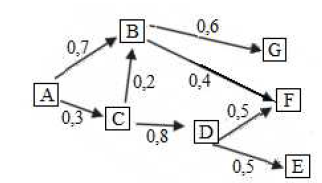
Os números indicados nas setas são as probabilidades de escolha que o visitante tem de ir de uma loja até outra. Nesse cenário, a probabilidade de um visitante ir de A até F é
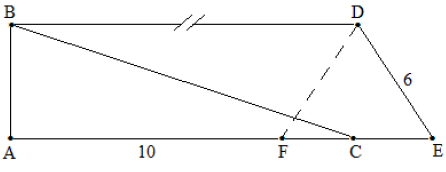
Na figura, os segmentos AE e BD são paralelos entre si e perpendiculares ao segmento AB; C é o ponto médio do segmento FE; DEF é um triângulo equilátero. Além disso, a distância de A até F mede 10 km, e a distância de D até E, 6 km.
Com base nesses dados, é CORRETO afirmar que a diferença entre o percurso BCED e a distância entre B e D, em quilômetros, é igual a
Com base nessas informações, é CORRETO afirmar que o total de encomendas enviadas para as farmácias B e C foi

Analisando o gráfico e a figura e sabendo-se que um corpo no interior do planeta, na metade do raio Terrestre, tem peso 400 N, podemos afirmar que esse mesmo corpo, no exterior do planeta, à uma distância d igual à 2R a partir da superfície, terá um peso, em newtons (N), igual a

Na prática, porém, devido aos atritos internos e externos, houve dissipação de energia e esse carrinho, após percorrer a mesma distância d, chegou à velocidade de 0,6 m/s.
A porcentagem de energia dissipada foi, então, de

Nesse equipamento, podemos notar que a porta possui uma tela com pequenos furos que servem para olharmos lá dentro durante o seu funcionamento. Esses pequenos furos também

Ao fazer tal procedimento, notamos que nossas mãos ficam mais frias e, de fato, a temperatura delas sofre uma redução. Essa queda da temperatura após o uso do álcool se deve

Esse tipo de termômetro afere a nossa temperatura capturando
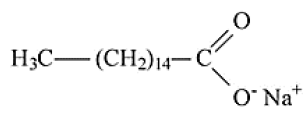
Em relação aos sabões, é CORRETO afirmar:
N2(g) + 3H2(g) ⇌ 2NH3(g) ∆H° = -92,6 KJ.mol-1
Um aluno, analisando a equação fornecida, fez as seguintes afirmações:
I - É possível maximizar a produção de amoníaco se a reação ocorrer a pressões elevadas. II - Dada a natureza exotérmica da reação direta, quanto menor a temperatura do vaso reacional, maior será a produção de amoníaco.
A alternativa CORRETA é:
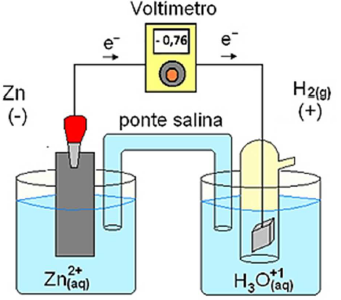
Fonte: https://mundoeducacao.uol.com.br/quimica/potencialpadrao-reducao-das-pilhas.htm. Acesso 15/05/2021.
Em relação a essa pilha, foram feitas as seguintes afirmativas:
I – Durante o funcionamento da pilha, a acidez da solução no catodo diminui. II – Ocorre oxidação da espécie Zn2+(aq). III – A semirreação de redução que ocorre na pilha é: 2H+(aq) + 2e- ➜ H2(g). IV – A força eletromotriz da pilha é dependente da concentração das espécies em solução.
Estão CORRETAS as afirmativas:

Assinale a alternativa que contém, respectivamente, as funções presentes nos compostos I, II e III:
Considere o ciclo para o NaCl na figura a seguir:

A representação CORRETA de um dos processos que ocorrem nesse ciclo é:
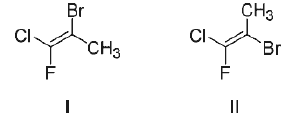
Em relação aos compostos apresentados, é CORRETO afirmar:

A energia envolvida na formação do gás metano a partir de gás carbônico e água é:
